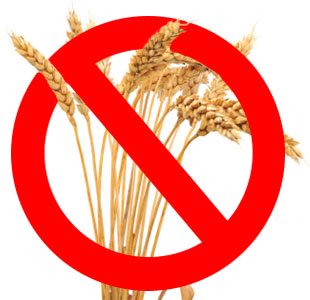Wheat allergy: What you need to know
Wheat allergy: what is it?
An example of a food allergy is wheat allergy, which happens when the body's immune system overreacts to wheat's proteins. Bread, pasta, cereal, and other baked foods are made from the cereal grain known as wheat. In many processed meals including sauces, soups, and salad dressings, it can also be present.
The signs of a wheat allergy:
Mild to severe symptoms of a wheat allergy might appear minutes or hours after consuming wheat. Some typical signs include:
- Hives
- Eczema
- Rashes
- Itching
- Swelling of the lips, tongue, or face
- Difficulty breathing
- Wheezing
- Diarrhea
- Vomiting
- Stomach cramps
- Anaphylaxis (a life-threatening reaction)
Wheat allergy causes:
Although the precise etiology of wheat allergy is unknown, a mix of genetic and environmental factors are considered to be responsible. Wheat allergies are more likely to occur in those with a family history of food allergies.
identification of wheat allergies:
It's critical to seek medical attention or consult an allergist for a diagnosis if you believe you or your child may have a wheat allergy. Your medical history, current symptoms, and a physical exam will be discussed with the doctor. To verify the diagnosis, they could also request skin testing or blood tests.
Allergy treatment for wheat:
Avoiding wheat is the only method to stop a wheat allergy reaction from occurring. Although there is no known treatment for wheat allergy, there are methods that can lessen symptoms.
You might be able to treat a minor reaction to wheat using over-the-counter drugs, like antihistamines. You might need to use an epinephrine auto-injector (such an EpiPen) if you experience a severe response. A hormone called epinephrine can ease the signs and symptoms of a severe allergic reaction.
enduring a wheat allergy:
It can be difficult to manage a wheat allergy, but it is achievable. Here are some suggestions for dealing with wheat allergy:
- Analyze food labels . It's crucial to check food labels because wheat can be concealed in many manufactured items. The terms "wheat," "gluten," and "rye" should be found on food labels.
- Eat nothing that contains wheat. It's crucial to stay away from meals containing wheat if you have a wheat allergy. This includes baked products like bread, spaghetti, cereal, and others. Additionally, it's critical to stay away from processed meals like sauces, soups, and salad dressings that may include wheat.
- Consult your physician about a meal plan. You can make a meal plan that is safe for you to follow with the help of your doctor. You should include gluten- and wheat-free meals in your meal plan.
- Always keep an epinephrine auto-injector on hand. It's crucial to always have an epinephrine auto-injector on hand if you have a wheat allergy in case you experience a severe reaction.
Enduring a wheat allergy:
It can be difficult to manage a wheat allergy, but it is achievable. Here are some suggestions for dealing with wheat allergy:
- Analyze food labels . It's crucial to check food labels because wheat can be concealed in many manufactured items. The terms "wheat," "gluten," and "rye" should be found on food labels.
- Eat nothing that contains wheat. It's crucial to stay away from meals containing wheat if you have a wheat allergy. This includes baked products like bread, spaghetti, cereal, and others. Additionally, it's critical to stay away from processed meals like sauces, soups, and salad dressings that may include wheat.
- Consult your physician about a meal plan. You can make a meal plan that is safe for you to follow with the help of your doctor. You should include gluten- and wheat-free meals in your meal plan.
- Always keep an epinephrine auto-injector on hand. It's crucial to always have an epinephrine auto-injector on hand if you have a wheat allergy in case you experience a severe reaction.
Advice on dining out if you have a wheat allergy:
Though it can be difficult, eating out while allergic to wheat is workable. Here are a few advices:
- In advance, give the eatery a call. Inform the restaurant of your wheat allergy when making a reservation and inquire on whether they can accommodate you.
- Inquire about the ingredients in the food from the waiter or waitress. When placing an order, enquire about the ingredients with the waiter or waitress. Ask about any unidentified sources of wheat, such as those found in sauces or dressings.
- Bring food with you. It is usually a good idea to bring your own food if you are unsure of whether a restaurant can accommodate your wheat allergy.
Support for people with wheat allergy:
There are many resources available to support people with wheat allergy. Here are a few:
- FARE (Food Allergy Research & Education): FARE is a nonprofit group that offers help and information to those who have food allergies. Recipes, meal plans, and advice for eating out are all available on the FARE website.
- The Celiac help Association is a distinct nonprofit organization that provides information and help to people with celiac disease and gluten sensitivity.. Wheat allergy sufferers may find a wealth of information on the Celiac Support Association to be useful.
- Online community for those with wheat allergies: The Wheat Allergy Online Community is a group for those who have a wheat allergy. Finding people who have had similar experiences to you and can provide support and direction is easy with the help of our online network.
It can be difficult to manage a wheat allergy, but it is achievable. You may manage your wheat allergy and have a normal, healthy life by heeding the advice given above.





Comments
Post a Comment